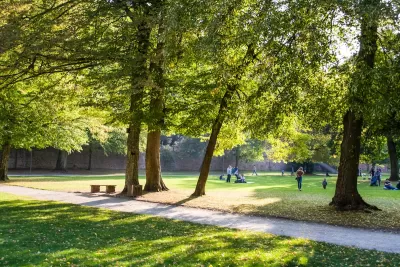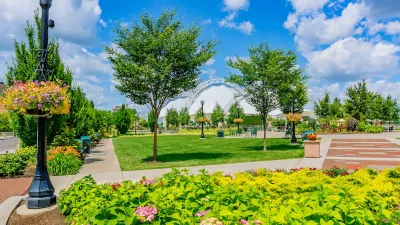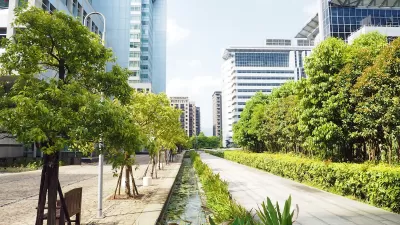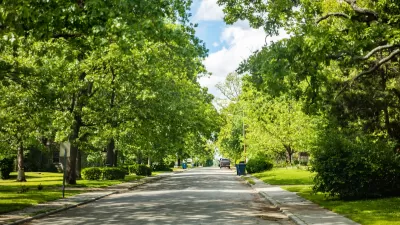The study reveals significant gaps in urban forestry, emphasizing the urgent need for reforms, innovative planting solutions, and expanded tree canopy to combat climate change and improve urban health.

The “3+30+300 rule,” a benchmark for greener cities introduced by urban forestry expert Professor Cecil Konijnendijk, sets standards for tree visibility, canopy cover, and park accessibility to enhance health, mitigate climate change, and create heat-resilient urban environments.
As reported by Thami Croeser, a study applying the rule to eight cities—Melbourne, Sydney, New York, Denver, Seattle, Buenos Aires, Amsterdam, and Singapore—revealed significant gaps in urban forestry infrastructure, with Singapore as the only city to pass all three criteria. Challenges include inadequate tree canopy coverage, insufficient access to parks, and issues like sparse planting and small tree sizes that limit shade and cooling benefits, even in cities renowned for their green initiatives.
Urban forests face structural challenges such as compacted soils, impermeable surfaces, and aggressive pruning practices that hinder tree growth and longevity. Sparse planting and restrictive engineering standards exacerbate these issues, making it difficult for cities to meet the benchmarks of the 3+30+300 rule. For example, while many buildings in Melbourne and Sydney have views of three trees, few achieve sufficient neighborhood canopy cover. Cities like Nice, France, face similar contradictions, with visible trees often being too small or too spread out to provide meaningful shade or ecological benefits.
To address these deficiencies, reforms are needed to prioritize trees as critical infrastructure alongside innovative planting solutions like soil vaults and permeable paving. These strategies not only enhance tree growth and longevity but also reduce urban flooding and improve environmental resilience. The study underscores the urgent need for cities worldwide to expand and protect urban forests, particularly as climate change intensifies and urban populations grow, emphasizing that comprehensive green infrastructure is essential for sustainable, livable cities.
FULL STORY: We rated the urban forests of 8 global cities – only Singapore passed the 30% canopy test

Planetizen Federal Action Tracker
A weekly monitor of how Trump’s orders and actions are impacting planners and planning in America.

Congressman Proposes Bill to Rename DC Metro “Trump Train”
The Make Autorail Great Again Act would withhold federal funding to the system until the Washington Metropolitan Area Transit Authority (WMATA), rebrands as the Washington Metropolitan Authority for Greater Access (WMAGA).

The Simple Legislative Tool Transforming Vacant Downtowns
In California, Michigan and Georgia, an easy win is bringing dollars — and delight — back to city centers.

The States Losing Rural Delivery Rooms at an Alarming Pace
In some states, as few as 9% of rural hospitals still deliver babies. As a result, rising pre-term births, no adequate pre-term care and "harrowing" close calls are a growing reality.

The Small South Asian Republic Going all in on EVs
Thanks to one simple policy change less than five years ago, 65% of new cars in this Himalayan country are now electric.

DC Backpedals on Bike Lane Protection, Swaps Barriers for Paint
Citing aesthetic concerns, the city is removing the concrete barriers and flexposts that once separated Arizona Avenue cyclists from motor vehicles.
Urban Design for Planners 1: Software Tools
This six-course series explores essential urban design concepts using open source software and equips planners with the tools they need to participate fully in the urban design process.
Planning for Universal Design
Learn the tools for implementing Universal Design in planning regulations.
Smith Gee Studio
City of Charlotte
City of Camden Redevelopment Agency
City of Astoria
Transportation Research & Education Center (TREC) at Portland State University
US High Speed Rail Association
City of Camden Redevelopment Agency
Municipality of Princeton (NJ)





























